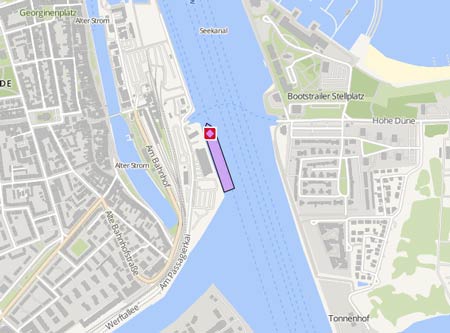POINT SUR
Course/Position
Latest ports
Latest Waypoints
Latest news
Research ship looing for wreck
A team of researchers aboard the 'Pint Sur' was undertaking a third search for the wreck of the 'SS Norindo', which is laden with heavy fuel oil and could pose ecological risk in the event of a leak, since setting off from Gulfport on April 13, 2023. Two previous searches were unable to locate the wreck of the American steamship that was sunk by a German U-boat in the Gulf of Mexico. While previous expeditions resulted in the identification of several magnetic anomalies that could indicate a shipwreck, both were ended early due to foul weather, leaving nearly half of the search area unexplored. The 2,686-tonne, 253-foot-long freighter was the first World War II combat casualty in the Gulf of Mexico. It was torpedoed and sunk by German U-boat on May 4, 1942, about 80 miles northwest of Dry Tortugas Island. The ship sank so quickly that it was impossible for the seven officers and 21 crewmen on board to launch the lifeboats. Five men went down with the ship, and the survivors were picked up two days later. The German U-boat continued its hunt in the Gulf of Mexico and, over the next two days, sank two more freighters, the 'Munger T. Ball' and the 'Joseph M. Cudahay'. These shipwrecks have since been discovered by recreational scuba divers in shallower waters off the Florida coast. The NOAA’s Office of Ocean Exploration believes that the 'Norlindo' is one of 87 shipwrecks in U.S. waters that pose a potential pollution threat from fuel onboard at the time of sinking. The freighter is believed to have sunk with about 5,000 barrels of fuel on board. A team of scientists from the University of Southern Mississippi has embarked on the third search mission, hoping to locate the wreck, determine its current condition and help avert environmental damage. The scientists will deploy a deep-towed sidescan sonar to scan the bottom in the areas that look most promising. If high-potential targets are located, the team will return with an ROV and inspect for visual confirmation and evaluation. The wreck is particularly important to find because of its proximity to environmentally sensitive areas. An oil leak could affect seabirds near the Dry Tortugas, which are home to bird species that cannot be found elsewhere in the U.S. The area also provides spawning and nursery habitat for nurse sharks. Report with photos: https://maritime-executive.com/article/researchers-launch-third-search-for-the-wwii-shipwreck-ss-norlindo
Research ship 'Point Sur' returns after 5 months to Moss Landing from Antarctica
For the Point Sur, a 130-foot ship that spent most of the past three decades supporting research no more than 200 miles off the Central Coast, sailing nearly 20,000 nautical miles was an historic accomplishment. Not only is such a trip rare for a vessel of her size, the Point Sur was able to assist with a wide range of scientific studies. The National Science Foundation chose the Point Sur after the vessel made voyages to the Aleutian Islands and Bering Sea in Alaska in recent years. The Point Sur left Moss Landing on Nov. 29 and spent a month cruising to Point Arenas, Chile, where it picked up geologists from the University of South Carolina. After helping them collect rock samples in waters filled with floating ice, the crew docked at Palmer Station, the U.S. research base in northwestern Antarctica. http://www.montereyherald.com/news/ci_23163069/research-ship-returns-moss-landing-from-antarctica
Upload News

